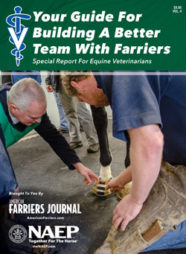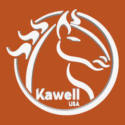Are you ready to build your hoof-care career?
The first step in your hoof-care journey is taking charge of your education — the foundation of your career. But don’t stop there. When building a house, construction doesn’t stop with the foundation. You build onto it and improve. Your hoof-care career is no different.
Are You Sure?
How do you do that? First, make sure you have a passion for the trade.
“If you’re meant to shoe horses, there’s nothing like it,” says Chris Gregory of Heartland Horseshoeing School in Lamar, Mo. “If you’re not meant to shoe horses, don’t do it because your whole life will be just misery. Some people learn the skills well enough to make money and realize the incredible living it can be. Then they get stuck in a rut because they don’t enjoy it. But, if it’s your passion, it is incredible.”
Learning to Swim
Many students are ready to take on the world after completing school. Keep in mind that a primary farrier education is no different than learning to become a welder or an electrician in a trade school. You’ve taken the first step, but you’re going to need some practice.
“After the end of the program, we take you to the edge of the cliff, and we push you into the little lake,” explains Bob Smith of Pacific Coast Horseshoeing School in Plymouth, Calif. “The only thing we’ve taught you to do is the doggy paddle. We’re trying to keep you from drowning. You learn how to go in different directions, change speeds, the breaststroke and the backstroke while continuing your education after you leave school.”
Here to Help
The farrier industry is a collection of generous people who are armed with valuable experience and the willingness to share it with you.
There’s no greater example than the knowledge and advice that you’ll find within the pages of the 16th edition of American Farriers Journal’s Getting Started in Hoof Care.
The valuable information you will read comes from knowledgeable hoof-care professionals who have invested their lives in this industry. They don’t sugarcoat the tasks ahead as you embark on your career.
You’ll find advice on the hurdles you face, what to expect as your business matures and strategies for a profitable hoof-care practice.
While you’re new to the industry, you have important responsibilities within it. You must continue learning, improving your skills and respect your trade. Reading this magazine is a good start, but there’s so much more available to you. Join a farrier organization, get to know others in the trade, attend clinics and conferences, compete in forging contests and, above all, ask questions.
In other words, continue building a structurally sound hoof-care practice upon the foundation you’ve established for yourself.








